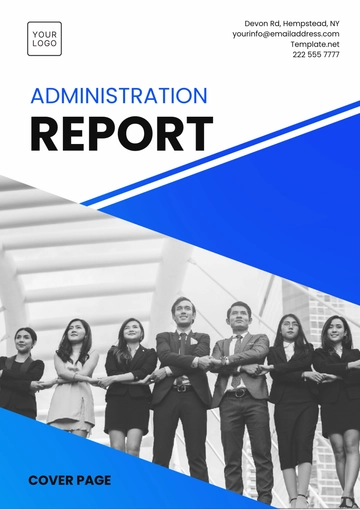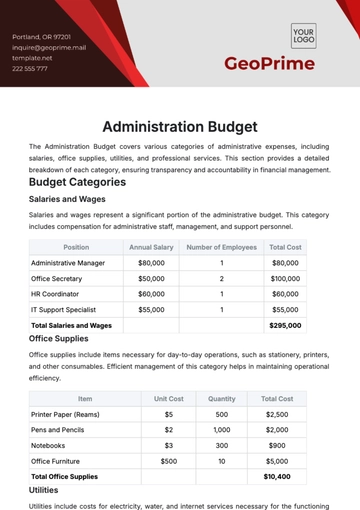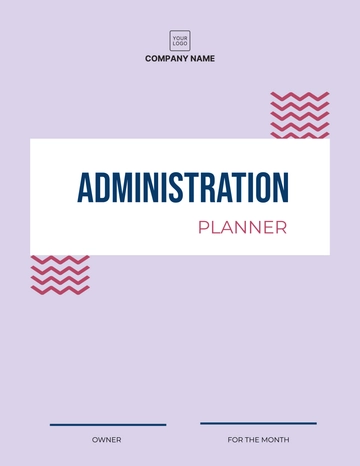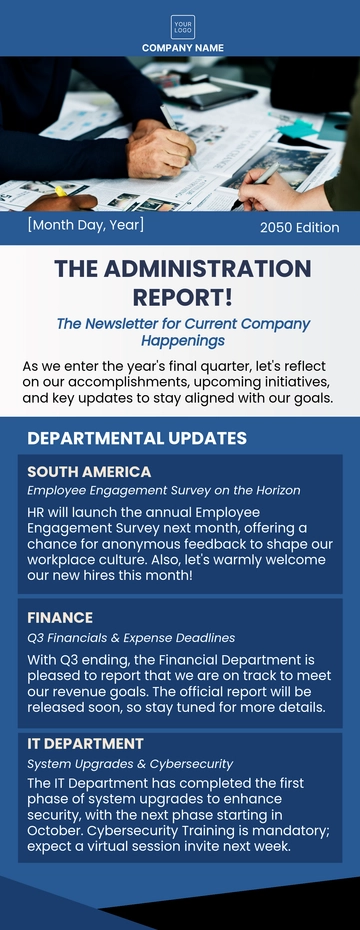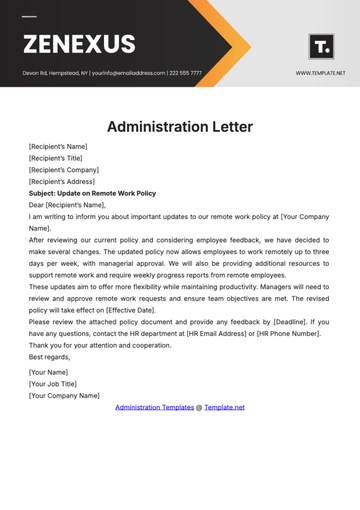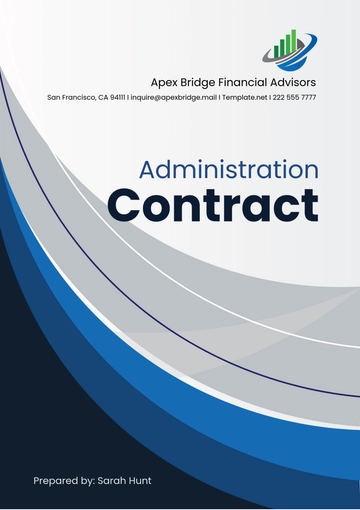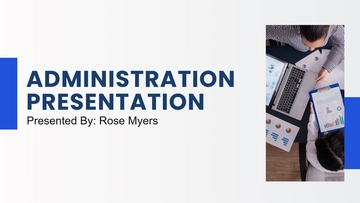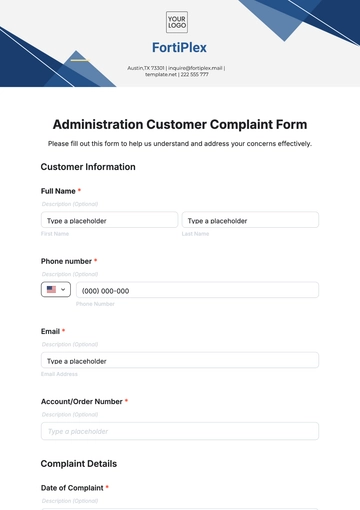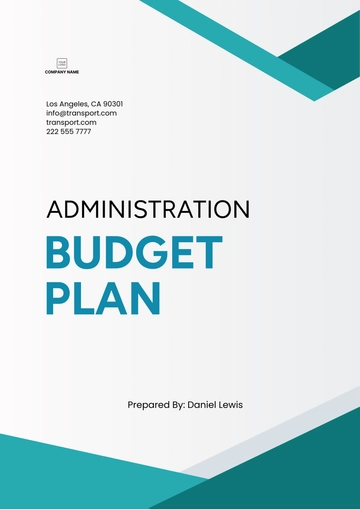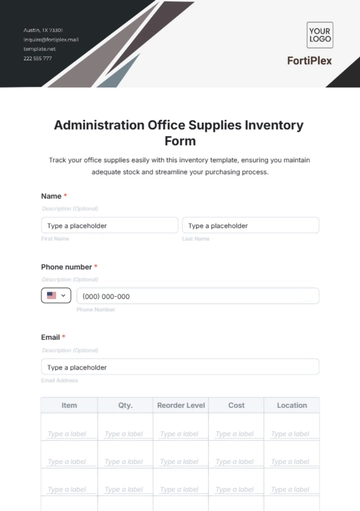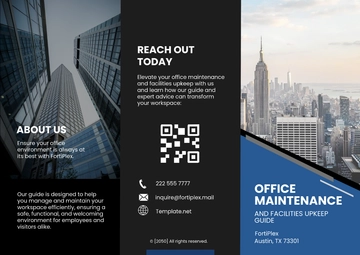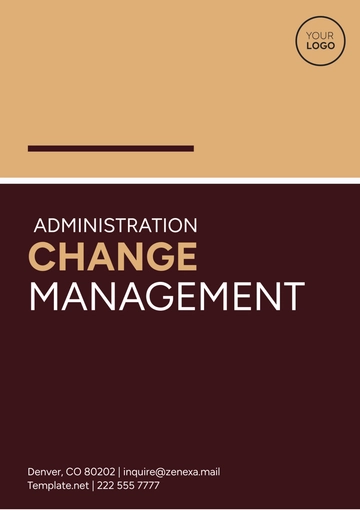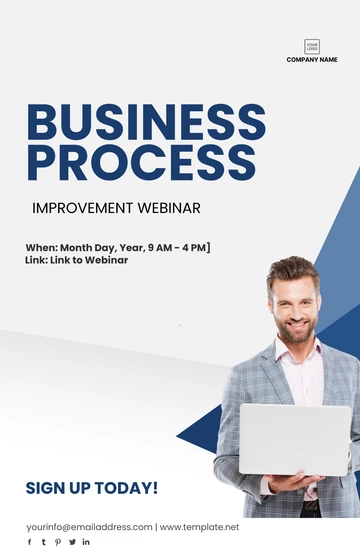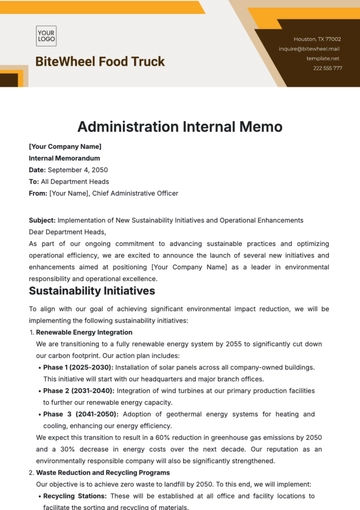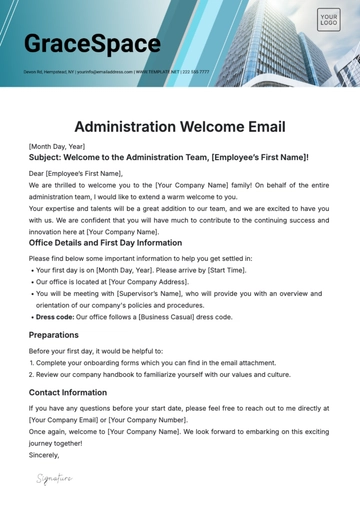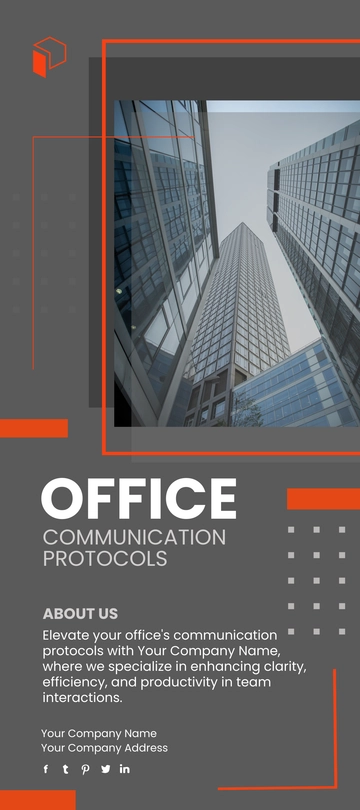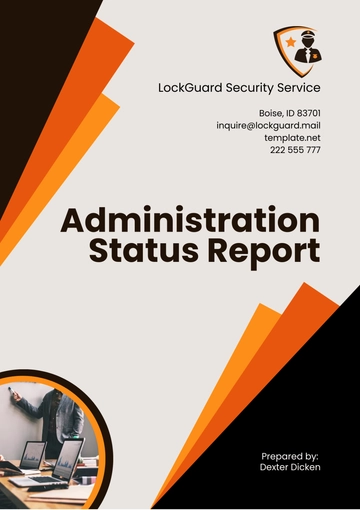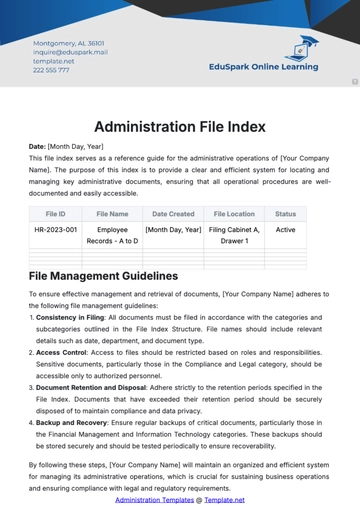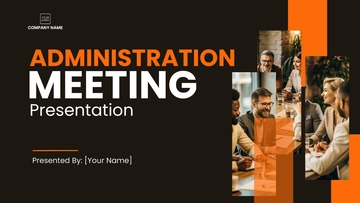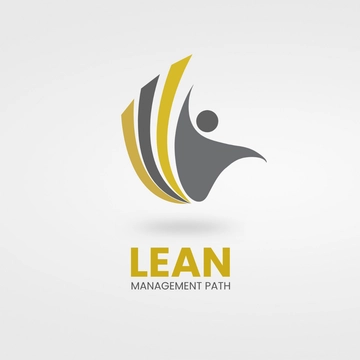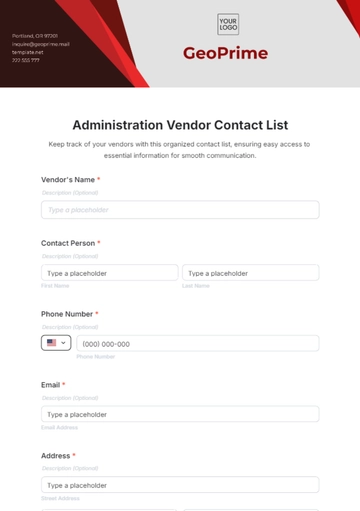Free Administration Meeting Impact Feasibility Study
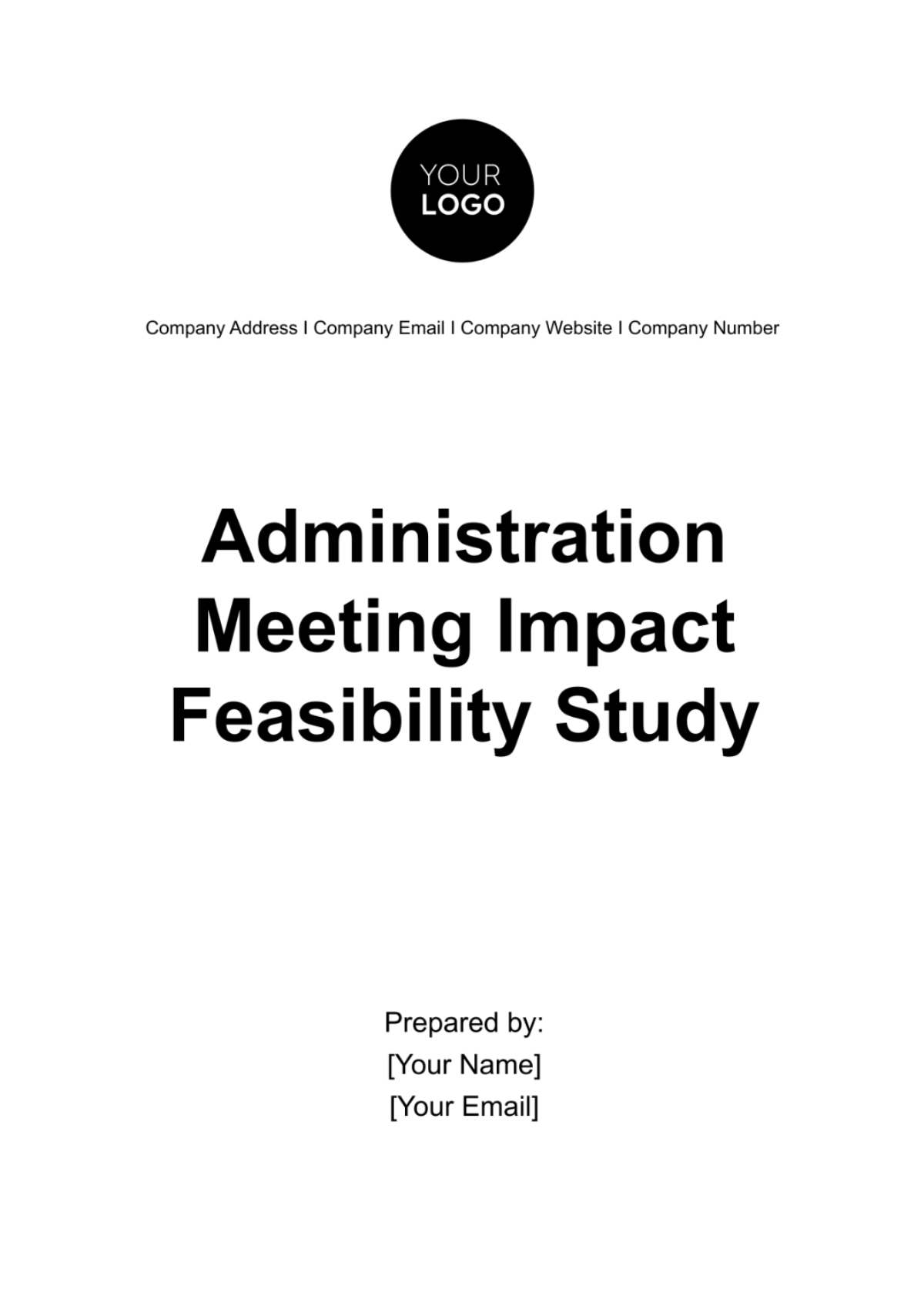
I. Introduction
The Administration Meeting Impact Feasibility Study has been conducted to assess the feasibility of hosting the annual administration meeting for [Your Company Name]. The purpose of this study is to evaluate the potential impact, logistical considerations, resource availability, and financial implications associated with organizing the meeting. The study aims to provide recommendations to senior management regarding the feasibility of proceeding with the meeting and to outline strategies for its successful execution.
II. Executive Summary
The comprehensive study titled 'The Administration Meeting Impact Feasibility Study', which pertains to an analysis of numerous factors concerning the hosting of the annual administrative meeting at the [Your Company Name], has been completed. This in-depth analysis brought into light a number of crucial findings. To be further elucidated, the key findings indicate that the overall feasibility of the meeting is indeed possible, despite being faced with quite a few challenges. These challenges primarily revolve around the allocation of the necessary budget in addition to broader logistical concerns. However, with the proper planning mechanisms in place along with effective resource management, these challenges can be efficiently dealt with. In terms of recommendations that have emerged from the analysis, a wide range of plausible solutions have been proposed. A few of the feasible strategies include actively seeking and acquiring sponsorship opportunities. This can greatly alleviate financial strains and aid in budget allocations.
Furthermore, there is a strong emphasis placed on the optimization of staffing resources. It has been recommended that we ensure the most effective use of the available staff in order to maintain a smooth operation throughout. Finally, rather than adhering to traditional methods, it was suggested to explore a diversity of alternative meeting formats. This could potentially lead to enhancing the cost-effectiveness of hosting the meeting. Such alternatives can bring in a fresh perspective and perhaps provide more interactive and efficient methods of conducting the meeting. By implementing these proposed recommendations, we can successfully navigate through the aforementioned challenges and achieve the desired results.
III. Meeting Overview
The proposed annual administration meeting has been specifically devised with the objective of bringing together a select group of individuals who all play vital roles within the organization. These include not just department heads, who have in-depth insight and understanding of their specific divisions but also key executives and stakeholders whose decisions and contributions significantly shape the overall direction and success of the organization. The central aim of this meeting will be threefold. Firstly, it intends to provide a structured platform for reviewing the general performance of the organization over the year preceding the meeting. Secondly, it will offer an opportunity to engage in constructive discussions surrounding strategic initiatives. Lastly, but equally importantly, the meeting aims to foster and boost collaboration within the organization, encouraging stronger professional relationships and more efficient teamwork.
In terms of logistics, the meeting has been scheduled to span two full days, ensuring ample time for all agenda items to be effectively addressed, and productive, non-hurried dialogue to take place. Holding the meeting at a specifically chosen off-site venue will additionally provide a change of environment, which may further facilitate fresh perspectives and innovative thinking.
A range of sessions have been planned to cover various topics crucial to the organization's current status and future goals. These include but are not limited to financial updates, where current economic standings and forecasts will be discussed, updates on projects, which will provide an opportunity for tracking progress and identifying challenges, and finally, activities geared towards team building, which underscore the organization’s commitment to fostering a harmonious and cooperative professional environment.
IV. Feasibility Analysis
Financial Feasibility
Budget Allocation: The estimated budget for the meeting is $[00], including venue rental, catering, transportation, and miscellaneous expenses. A detailed breakdown of expenses has been provided to ensure transparency and accountability in budget management.
Cost Analysis:
Expense Category | Estimated Cost ($) | Actual Cost ($) |
|---|---|---|
Venue Rental | $20,000 | $18,500 |
Catering | ||
Transportation | ||
Miscellaneous |
Funding Sources: [Your Company Name] will allocate $[00] from the annual budget for the meeting. Additionally, sponsorship opportunities will be pursued through partnerships with relevant industry stakeholders and vendors to supplement the budget.
Logistical Feasibility
Venue Selection: Following thorough evaluation, the Hilton Conference Center has been selected as the venue for its central location, spacious meeting rooms, and excellent amenities. A contract has been negotiated to secure the venue for the designated dates.
Transportation: Shuttle services will be arranged to transport attendees from the corporate office to the venue and back. The transportation schedule will be communicated in advance to ensure timely arrival and departure.
Equipment and Technology: State-of-the-art audio-visual equipment, including projectors, sound systems, and microphones, will be rented to facilitate presentations and interactive sessions. IT support personnel will be on standby to address any technical issues promptly.
Resource Feasibility
Personnel Availability: Key personnel, including department heads and guest speakers, have confirmed their availability to participate in the meeting. A backup list of alternate speakers has been compiled in case of unforeseen scheduling conflicts.
Staffing Needs: A comprehensive staffing plan has been developed, assigning specific roles and responsibilities to event coordinators, registration staff, ushers, and technical support personnel. Training sessions will be conducted to ensure all staff are adequately prepared for their duties.
Material and Supplies: A procurement plan has been implemented to acquire necessary materials and supplies, including stationery, name tags, signage, and promotional materials. Bulk purchasing arrangements have been made to secure competitive pricing and timely delivery.
V. Stakeholder Analysis
Stakeholders
In business settings, stakeholder involvement is often crucial to achieving desired objectives and ensuring a broad spectrum of representation and input. Stakeholders can come in various forms, and each provides unique perspectives and values to the table. Key stakeholders in a business setting may include department heads and executives, who manage and take on leadership roles in the business operation. They oversee activities and make significant decisions that likely have a big impact on the business's direction. However, involvement should not be limited to these roles only. Employees, for example, could also play a major role as stakeholders. They make up a significant portion of the business functionality and operation, often directly involved in the production of goods or rendering of services. Their insights and opinions, thus, can be extremely valuable.
In addition to these roles, other key stakeholders could include shareholders, customers, and community partners. Shareholders, who hold ownership in the business through shares, have the financial stake and vested interest in the success of the business. Their perspectives reflect from an investment viewpoint. Customers can provide direct feedback on the business's goods and services, helping the business improve its offerings and address customer needs more efficiently. They bring in the perspectives of end-users. Community partners may include local organizations or other associations who interact with the business routinely. They provide insights on how the business interacts with its surrounding community and broader society.
Expectations
The expectation among stakeholders is that the forthcoming meeting should act as a platform that would provide numerous opportunities for networking among colleagues, enhancing their professional development, and aligning everyone's efforts with the broader organizational goals. For this aim to be met effectively, it will be absolutely critical to seriously address their expectations as well as any potential concerns. This will facilitate the creation of a positive atmosphere that promotes inclusivity across all levels.
Engagement Strategies
Engagement with stakeholders will be encouraged and facilitated through the use of frequent and regular communication methods. These methods will primarily include updates through emails, providing information through newsletters, and making announcements on various social media platforms. After the conclusion of the event, surveys aimed at collecting feedback will be handed out for the attendees to fill. This procedure is put in place to encourage stakeholders to provide their input and suggestions which we will then utilize to make improvements in the future.
VI. Risk Assessment
Potential Risks
There are a range of potential risks associated with this project; these extend beyond just budget overruns and logistical challenges. Other categories of potential risks include adverse weather conditions that can disrupt project timelines, the failure of the technology that could potentially halt operations, and the danger of participants becoming disengaged which can reduce the project's performance and effectiveness. To manage this extensive array of risks, a comprehensive risk register has been meticulously developed for this purpose. This will play a crucial role in identifying any potential risk components related to the project, assessing the possible damage they can cause, and then prioritizing these risks based on the likelihood of their occurrence and the potential impact they could have.
Risk Mitigation Strategies
Strategies for mitigating risks include a number of measures such as establishing contingency funds, which act as a financial safety net in the event of unexpected costs or losses. Another key strategy is securing insurance coverage, which provides a layer of financial protection should any unforeseen incidents occur. Additionally, implementing backup plans for critical activities is imperative to maintain business continuity in the face of potential adversities. This not only means having alternate arrangements for essential business functions, but also involves comprehensive planning and testing to ensure these plans are executable when needed. To ensure these risk mitigation strategies effective, regular risk reviews will be conducted throughout the planning process. These reviews are critical to stay ahead of potential threats, allowing for any emerging risks to be detected early on and to be proactively addressed, reducing their potential impact on the business.
VII. Impact Analysis
Benefits: The meeting is expected to yield numerous benefits, including enhanced communication, alignment, and morale among employees. Furthermore, it will provide a platform for showcasing organizational achievements, promoting collaboration, and fostering a sense of belonging.
Outcomes: Tangible outcomes include the development of action plans, strategic initiatives, and performance metrics to track progress towards organizational goals. Additionally, intangible outcomes such as improved employee engagement and loyalty will contribute to long-term success.
Evaluation Metrics: Key performance indicators (KPIs) will be established to measure the effectiveness and impact of the meeting, including attendance rates, participant feedback scores, and post-event action plan implementation progress.
VIII. Alternatives and Recommendations
Alternative Formats: Given the evolving landscape of remote work and digital communication, alternative meeting formats such as virtual or hybrid models may be explored to accommodate remote participants and reduce travel expenses. Leveraging technology platforms can enhance accessibility and inclusivity while minimizing environmental impact.
Recommendations: In addition to seeking sponsorship opportunities and negotiating vendor contracts, leveraging existing partnerships and collaborative networks can further enhance cost-effectiveness and resource utilization. Furthermore, exploring innovative meeting formats and interactive engagement tools can enhance participant experience and satisfaction.
IX. Implementation Plan
Timeline: A detailed timeline outlining pre-event planning, execution, and post-event evaluation activities has been developed and communicated to all stakeholders. Regular progress updates and milestone reviews will be conducted to ensure adherence to the implementation plan and timely resolution of any issues that arise.
Task Assignments: Responsibilities have been delegated to respective team members based on their expertise and availability. Clear communication channels and reporting structures have been established to facilitate coordination and collaboration among team members.
Monitoring and Evaluation: Regular progress reviews and feedback sessions will be conducted to monitor the implementation plan's progress and identify any deviations or areas requiring adjustment. Post-event evaluations will be conducted to assess the meeting's overall effectiveness and identify lessons learned for future improvement.
X. Conclusion
The Administration Meeting Impact Feasibility Study concludes that while challenges exist, hosting the annual administration meeting for [Your Company Name] is feasible with thorough planning and strategic resource allocation. By addressing financial considerations, logistical arrangements, stakeholder engagement, and risk mitigation strategies, the meeting can be successfully executed to achieve its intended objectives. The recommendations provided offer actionable insights to optimize resource utilization, enhance stakeholder engagement, and maximize the meeting's overall impact.
XI. Appendices
Detailed Budget Breakdown: A comprehensive breakdown of budget allocations and actual expenses incurred, including invoices and receipts, to ensure transparency and accountability in financial management.
Venue Options and Availability: Documentation of venue selection criteria, site visits, and contract negotiations, along with confirmation of booking and reservation details.
Stakeholder Engagement Plan: Detailed plan outlining communication strategies, engagement activities, and feedback mechanisms to actively involve stakeholders throughout the meeting planning process.
Risk Register: Comprehensive register documenting identified risks, their potential impact, likelihood, and mitigation strategies, to proactively manage and mitigate potential threats.
Meeting Agenda (Draft): Preliminary agenda outlining session topics, speakers, and activities planned for the administration meeting, subject to refinement based on stakeholder feedback and logistical considerations.
- 100% Customizable, free editor
- Access 1 Million+ Templates, photo’s & graphics
- Download or share as a template
- Click and replace photos, graphics, text, backgrounds
- Resize, crop, AI write & more
- Access advanced editor
Discover seamless event planning with the Administration Meeting Impact Feasibility Study Template from Template.net. This editable and customizable template ensures precision in assessing financial, logistical, and stakeholder aspects. Enhance decision-making with the AI Editor Tool, crafting a comprehensive study for successful administration meetings. Elevate your planning experience and achieve impactful outcomes effortlessly.
